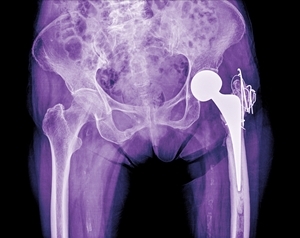According to the U.S. Centers for Disease Control and Prevention, 332,000 individuals receive a total hip replacement surgery every year. It's one of the more common inpatient surgeries that travel nurses as well as medical professionals on travel physical therapy jobs will need to be informed about, especially with a growing number of baby boomers entering retirement age.
Candidates for hip replacement surgery
While many medical professionals know that osteoarthritis is the main underlying cause for hip replacement surgery, there are several other conditions that can contribute to a need for such an operation, according to the National Institutes of Health. Some of these include bone tumors, injuries, fractures, rheumatoid arthritis and osteonecrosis. Avascular necrosis can also lead to a hip replacement.
The general assumption is that patients over age 60 are more likely to have a hip replacement. While it's true that older individuals with more wear and tear on the hip joints will undergo this surgery, young people might also need assistance in recovery.
Details about hip replacement
This procedure has grown quite sophisticated over the years thanks to surgical technologies and scientific advancements in artificial joints. In most cases, a surgeon will replace the head of the femur and acetabulum with artificial hip parts after removing poor bone tissue and cartilage. However, if the damage to the hip joint is not as severe, patient might qualify for minimally invasive surgery that requires less recovery time (though these types of candidates are typically 50 years or younger, according to the NIH).
Helping patients recover from hip replacement surgery
During travel nursing, you might need to help certain patients during their recovery period. This can be a painful process for some, as the body will need to heal surgical wounds and to repair tissue tears. As such, the entire process can take anywhere from four to six weeks to six months.
Many physicians will prescribe a combination of medications and physical therapy to ease post-op pain and help patients be able to return to their normal day-to-day activities. According to the Mayo Clinic, early mobilization is key in order to reduce the risk of blood clots. Patients must be encouraged to sit up on their own each day and try to walk with crutches or a walker. In fact. some patients might be encouraged to do this on the day of surgery or the day following the operation.
As time goes on, physical therapists might also try to strengthen muscles and bones around the hip joint. This will begin usually when the patient is still in inpatient care and continue after he or she has been discharged for several weeks or months. Most of these exercises will involve general stretching around the hip and thigh muscle strengthening, according to the American Association of Hip and Knee Surgeons.
Hip replacement surgery is a common operation that requires physical therapy expertise so that joints will heal and recover optimally for your patients.


Hip replacement surgeries are definitely very common, so travel nurses should definitely be informed about the best physical therapy practices for patients. Thanks for sharing!
My grandmother is recovering from a hip replacement, and I want to help her to get back to her usual self. I appreciate being able to learn a little bit more about this procedure and have a better idea of what she’s dealing with. This was a really helpful article, thank you for all of the helpful information on this type of surgery!
I agree that this type of surgery is rough, but so helpful to patients will mobility. It is amazing that their are physical therapist there to help you with this process. Without them, you would leave the hospital soon after the operation and be on your own. These professionals work hard to get you functioning well again and back into the comfort of your own home.
It’s interesting that candidates for the minimally invasive procedure are typically 50 years or younger. I wouldn’t think that many people that young even need hip replacement surgery. I would be interested to know the number that fit that age group who do have the procedure done.
I recently had the misfortune of having to under a pretty intense hip replacement. I had to undergo some reconstructive surgery in order to correct a severe trauma. The whole process leading up to the surgery was traumatic for obvious reasons. I don’t want to go into too much detail but during my surgery, my team used a FAW blanket called the Bair Hugger and it helped so much with my post surgical recovery. I credit my super quick recovery to the blanket. Here are some facts about the system http://www.fawfacts.com
Senior Care LafayetteSaint Anthony Rehabilitation and Nursing Center offer high-quality Clinical care and Rehabilitation services. Our unparalleled expertise, commitment, and compassion assure that we provide the very best healthcare in each service we offer.
It’s interesting that candidates for the minimally invasive procedure are typically 40 – 50 years or younger. I wouldn’t think that many people that young even need hip replacement surgery. I would be interested to know the number that fit that age group who do have the procedure done.